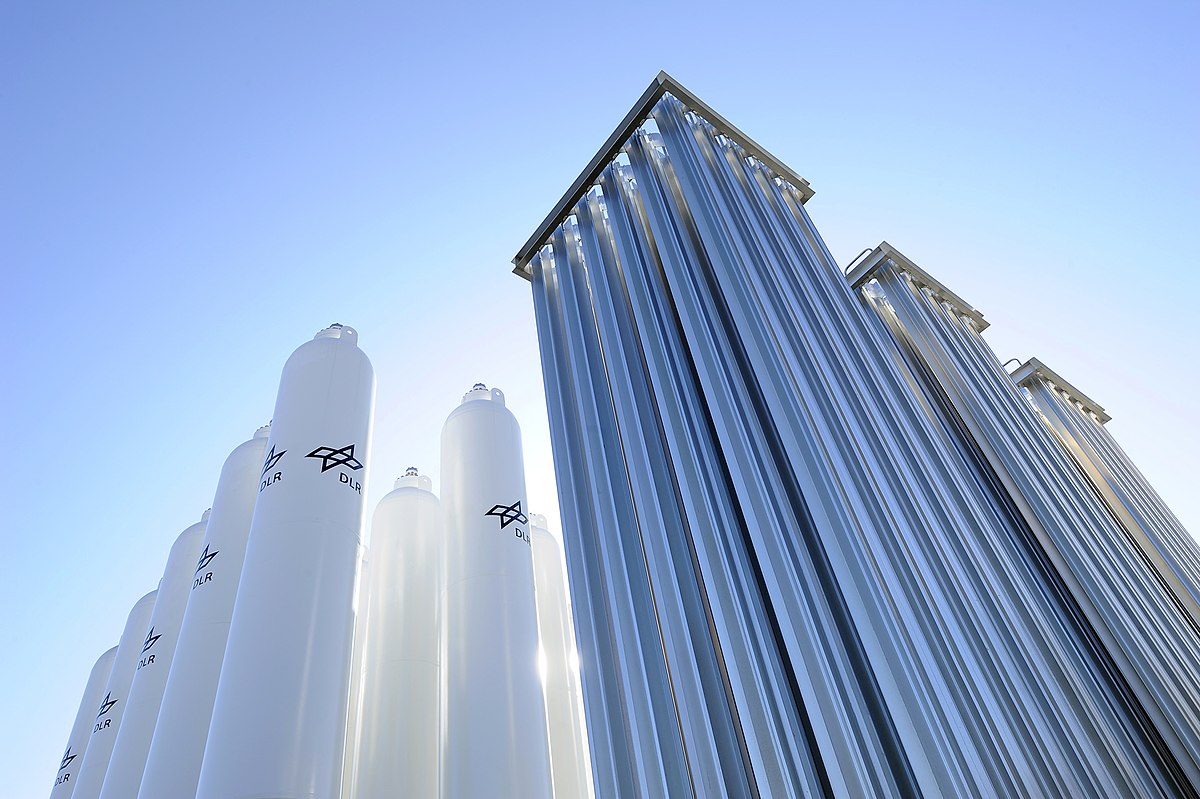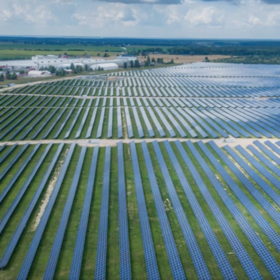From pv magazine International
Toronto-based Hydrogen Optimized, a subsidiary of Key DH Technologies, said it has demonstrated the capability of its patent-pending RuggedCell high-current unipolar electrolysis system to ramp from 0 to 50,000 amperes in less than 10 seconds. “This breakthrough shows that RuggedCell technology can be used to stabilize electrical grids and optimize energy recovery from intermittent renewable power sources such as solar and wind,” the company wrote on Wednesday, referring to its alkaline water electrolyzers. “To this point, the consensus among Green Hydrogen experts worldwide has been that only PEM water electrolysers could rapidly absorb and shed electricity and thereby be used to stabilize variable electric power sources. We have now proven that RuggedCell alkaline technology, which is uniquely scalable to individual system deployments in the hundreds of megawatts, equals or betters PEM technology’s capability to handle variable power levels,” commented Hydrogen Optimized CEO Andrew Stuart. According to the company, the technology is a significant development away from low-current, low-power bipolar alkaline technology in the market. “These systems are inherently limited in their range of power variability and take several minutes or more to ramp up and down. Furthermore, like PEM technology, individual bipolar alkaline modules are limited to smaller scale output.”
French multinational utility company Engie and UAE-government-owned renewable energy company Masdar signed a strategic alliance agreement last week to explore the co-development of a UAE-based green hydrogen hub. “The two companies are looking to develop projects with a capacity of at least 2 GW by 2030, with a total investment in the region of US$5 billion,” reads the press release. The two companies will initially target local markets. They aim to expand capacity to create a giga-scale green hydrogen hub for the Gulf Cooperation Council (Bahrain, Kuwait, Oman, Qatar, Saudi Arabia, and the United Arab Emirates). In September, Masdar, also known as the Abu Dhabi Future Energy Company, teamed up with Abu Dhabi Nation.
Japan’s Kawasaki Heavy Industries and German energy company RWE are planning to install a hydrogen-fueled gas turbine based on renewable green hydrogen in Lingen, Germany. “At the site of its gas-fired power plant in Lingen, RWE intends to generate green hydrogen with electrolysers powered by renewable electricity. The company is planning to build a first 100-MW electrolysis plant in Lingen by 2024, which is to be expanded to 2 GW by the end of the decade,” the two companies wrote on Wednesday. Kawasaki wrote that it has developed two different types of combustion systems to achieve 100% hydrogen operation. “One is a diffusion flame, the other a Dry-Low-Emission (DLE) combustor. In the beginning, the diffusion flame combustor will be used for the H2GT- Lingen project. The diffusion flame combustor will use water injection to achieve low emissions. In a subsequent phase, the installed diffusion flame combustor will be replaced by a Micro-Mix DLE combustor (MMX-combustor).” In its group vision, Kawasaki wrote that it aims to achieve “standalone carbon neutrality in 2030 through independent initiatives centered on hydrogen power generation.” Kawasaki wants to transport 225,000 tonnes of liquefied hydrogen from abroad to Japan in 2030.
German engineering conglomerate ThyssenKrupp Industrial Solutions and Australian listed minerals company Infinity Lithium are collaborating to test out the feasibility of green hydrogen to power the lithium chemical conversion process. “The Memorandum of Understanding highlights the intention of both parties to apply technological advancements for green hydrogen energy applications for pyrometallurgical equipment relevant to lithium chemical conversion processes. The advancements have the potential to be integrated into both the San José Lithium Project and the Infinity GreenTech novel lithium hydrometallurgical conversion processes,” reads a press release published on Monday. The San José is located in the Extremadura region of Spain. “This global first application to an integrated lithium project will see pilot scale activities using the new tk BU Mining Hydrogen Burner installation in Germany to assess San José feedstock and the use of green hydrogen to power a rotary kiln.”
British gas distribution company SGN, Macquarie’s Green Investment Group (GIG), and ExxonMobil affiliate Esso Petroleum have signed a Memorandum of Understanding (MoU) to explore the use of hydrogen and carbon capture to help reduce emissions in the Southampton industrial cluster. “An initial feasibility study by SGN and GIG shows the annual hydrogen demand from the cluster, which is home to ExxonMobil’s Fawley complex, could rise to as much as 37 TWh by 2050, including the heating demand of 800,000 homes across the South of England,” wrote ExxonMobil on Wednesday. The feasibility study estimated that carbon capture facilities could initially capture approximately 2 million tonnes of CO2 per year, including from initial hydrogen production of around 4.3 TWh of hydrogen per year.
The government of South Australia, Swiss multinational commodity trading company Trafigura, and Euronext-listed multi-metals business Nyrstar, announced a joint investment to construct a commercial-scale green hydrogen manufacturing facility in Port Pirie, a regional city north of Adelaide. “The AU$5 million Front End Engineering Design study for the Port Pirie Green Hydrogen Project, jointly funded by Trafigura and the South Australian State Government, will commence immediately, with a final investment decision to be made by the end of 2022. If approved, construction will commence in 2023,” Trafigura wrote on Thursday. The AU$750 million project, if approved, would initially produce 20 tonnes per day (tpd) of green hydrogen for export in the form of green ammonia. The full-scale plant should produce 100tpd of green hydrogen at full capacity from a 440MW electrolyzer. At that stage, the project would target both the export and domestic markets. The oxygen produced would be utilized by the Nyrstar Port Pirie smelter. Nyrstar said that the Port Pirie Green Hydrogen Project would enable its business to take a significant step in improving its competitiveness in the international market for zinc, lead, and other metals. Trafigura said it would source 100% renewable energy.
The hydrogen hype is helping green hydrogen to become cost-competitive in the long run, wrote consultancy group Wood Mackenzie in its “Hydrogen costs 2021: getting ready to scale”, adding that the fall in electrolyzer prices will allow green hydrogen to “be competitive in 12 markets – those with the highest utilization rates and lowest renewable electricity prices – by 2030.” Bridget van Dorsten, a research analyst on Wood Mackenzie’s hydrogen research team, explained that Brazil and Chile are amongst the front-runners of harnessing cheap renewables to produce green hydrogen off-grid. “By 2050, 20 of the 24 countries in our analysis see very competitive green hydrogen costs,” she said. The analysis includes Australia, Belgium, Brazil, Canada, Chile, China, France, Germany, India, Indonesia, Italy, Japan, Malaysia, Morocco, the Netherlands, Norway, Oman, Portugal, Russia, Saudi Arabia, South Korea, Spain, the U.K., and the U.S. Wood Mackenzie expects a significant drop in electrolyzer CAPEX by 2025. Costs are being driven down by economies of scale, new entrants to the market, greater automation, and increased modularity. Van Dorsten argued that cost drivers differ for different electrolyzer types. “Reductions for solid oxide electrolysers are set to be the most dramatic in the next six to eight years; but alkaline and polymer electrolyser membrane costs are forecast to fall between 35% and 50% by 2025.” Van Dorsten also noted that the global estimated electrolyzer manufacturing capacity was just 200 MW in 2019, but with 1.3 GW additional capacity in Q1 2021, it now stands at around 6.3 GW.
The “first” independent and voluntary hydrogen coalition was launched on Thursday by a group of scientists, academics, and engineers based in the U.K., Germany, and the Netherlands. “Policy-makers in the UK and EU are placing big bets on hydrogen’s role in the energy transition. While hydrogen has an important part to play, we’re concerned that an over-reliance on hydrogen will delay existing, cheaper and scalable solutions like electrification” said David Cebon, Professor of Mechanical Engineering, University of Cambridge, England. Members of the coalition aim to bring “concrete evidence back into the hydrogen debate, free from industry bias.” This will primarily be through briefings, access to data, and media events.
This content is protected by copyright and may not be reused. If you want to cooperate with us and would like to reuse some of our content, please contact: editors@pv-magazine.com.








By submitting this form you agree to pv magazine using your data for the purposes of publishing your comment.
Your personal data will only be disclosed or otherwise transmitted to third parties for the purposes of spam filtering or if this is necessary for technical maintenance of the website. Any other transfer to third parties will not take place unless this is justified on the basis of applicable data protection regulations or if pv magazine is legally obliged to do so.
You may revoke this consent at any time with effect for the future, in which case your personal data will be deleted immediately. Otherwise, your data will be deleted if pv magazine has processed your request or the purpose of data storage is fulfilled.
Further information on data privacy can be found in our Data Protection Policy.